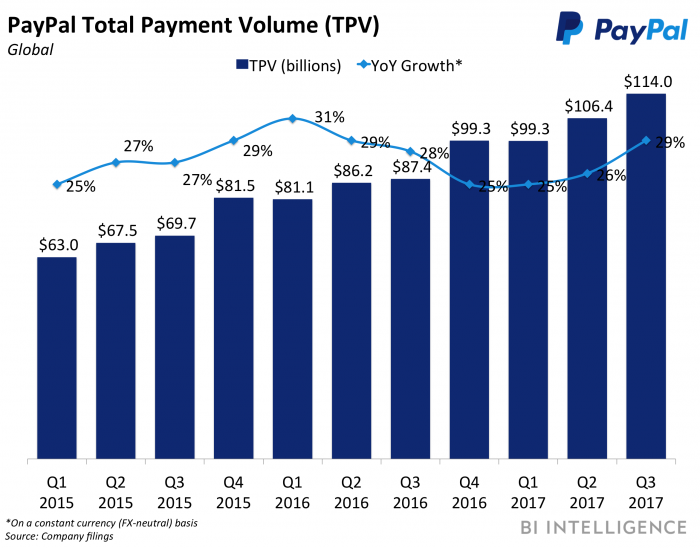This story was delivered to BI Intelligence “Payments Briefing” subscribers. To learn more and subscribe, please click here.
PayPal has launched Money Pools, a service that allows its users to create fundraising pages where their contacts can contribute money for a shared item or event, like a group gift or trip,accordingto TechCrunch.
The platform is available in 16 countries, including the US, UK, and Germany.
Money Pools enables PayPal users to create or contribute to a Money Pool. The creator of the pool can personalize their page with a goal amount, item description and photo, and choose if the contributors appear publicly or anonymously.
Money Pools is similar to crowdfunding sites like GoFundMe, but includes a social aspect; the creator of a pool can track funds and link their account to send reminders to the sender via text, email, Facebook, or Twitter. Funds are deposited into the creator’s Money Pools account, which the creator can access at any time.
PayPal’s strategy to monetize Money Pools could mimic the one it employed with Venmo. Venmo — like most peer-to-peer (P2P) payment apps — didn’t initially have many avenues for monetization, but PayPal has been creating revenue streams for the P2P payment app. PayPal recently announced that Venmo will be accepted at 2 million retailers in the US, which was its most aggressive move yet to monetize the app. Money Pools — which doesn’t charge anything currently — would likely be even easier to monetize. Established crowdfunding sites GoFundMe and Kickstarter, for example, each take a 5% cut of the money raised on their sites, and GoFundMe also charges a 2.9% credit card processing fee plus 30 cents per donation, so consumers are used to those fees. If PayPal follows a similar model, it could likely drive massive revenue volume on Money Pools.
This is another move by PayPal to build out a widespread payments ecosystem. The firm recently posted a strong Q3 2017, adding 218 million active customers who spent $114 billion in total payment volume (TPV), marking 29% growth year-over-year (YoY). And PayPal grew its customer base 14% YoY, indicating that it’s growing by engagement, as well as by scale. The company signed over 18 partnerships with various firms over the last two years in an ongoing effort to continue its global expansion. Most recently, the firm integrated into Facebook Messenger, enabling users to send and receive money through the platform.
Jaime Toplin, research analyst for BI Intelligence, Business Insider’s premium research service, has compiled a detailed report on mobile P2P payments that:
- Forecasts the growth of the P2P market, and what portion of that will come from mobile channels, through 2021.
- Explains the factors driving that growth and details why it will come from increased usage, not increased spend per user.
- Evaluates why mobile P2P isn’t profitable for companies, and details several cases of attempts to monetize.
- Assesses which of these strategies could be most successful, and what companies need to leverage to succeed in the space.
- Provides context from other markets to explain shifting trends.
To get the full report, subscribe toBI Intelligence and gain immediate access to this report and more than 250 other expertly researched reports. As an added bonus, you’ll also gain access to all future reports and daily newsletters to ensure you stay ahead of the curve and benefit personally and professionally. >>Learn More Now
Learn more:
- Credit Card Industry and Market
- Mobile Payment Technologies
- Mobile Payments Industry
- Mobile Payment Market, Trends and Adoption
- Credit Card Processing Industry
- List of Credit Card Processing Companies
- List of Credit Card Processing Networks
- List of Payment Gateway Providers
- M-Commerce: Mobile Shopping Trends
- E-Commerce Payment Technologies and Trends

















